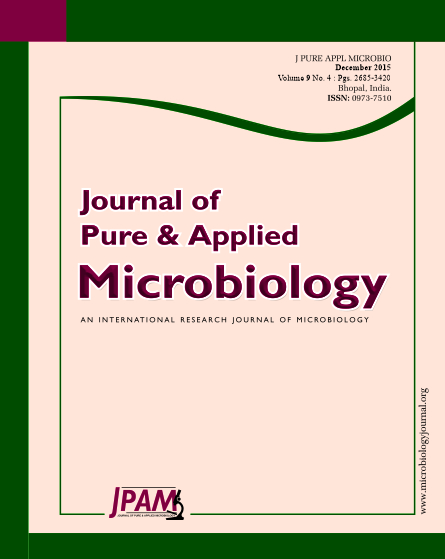Microorganisms that degrade cellulose in extreme environments have an enormous biotechnological potential. Seven cellulolytic microorganisms were isolated from soil of the former lake Texcoco (pH 9.6 and electrolytic conductivity 115 dS m–1) in Ar medium (Congo red agar medium) and the enzyme activity was determined semiquantitatively by measuring the hydrolysis halo around the colony, which varied from 0.8 to 5.0 cm. Of the seven isolated bacteria, two bacteria showed cellulase activity. Phylogenetic analysis based on the 16S rRNA gene, showed that one isolate was closely related to Cellulomonas bogoriensis with a similarity of 99.7% and the other to Nocardiopsis dassonvillei with 99.69% similarity. The C. bogoriensis strain had a maximum cellulolytic activity of 177 mU ml–1 and the N. dassonvillei strain 136 mU ml– 1 at pH 9 and 37 °C. Celluloytic activity of the two strains isolated from the saline alkaline soil was not reported previously.
Actinobacteria, Carboxymethylcellulose (CMC), Cellulases, Extremophiles.
© The Author(s) 2015. Open Access. This article is distributed under the terms of the Creative Commons Attribution 4.0 International License which permits unrestricted use, sharing, distribution, and reproduction in any medium, provided you give appropriate credit to the original author(s) and the source, provide a link to the Creative Commons license, and indicate if changes were made.


